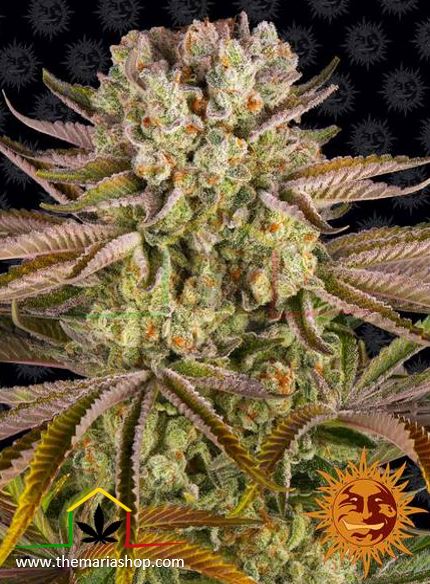Cannabis history
The origin of cannabis seeds is very difficult to establish, cannabis is said to have originated in Central and South Asia. Evidence of cannabis smoke inhalation has been found dating back to the third millennium BC (before Christ), as indicated by the discovery of charred cannabis seeds inside a brazier from a ritual performed in an ancient cemetery in Romania. There are also indications that it was used by some ancient tribes in modern India and Nepal for thousands of years. The herb was called ganjika, now called ganja in India, and soma, which is the divine narcotic of ancient India and considered to mediate with the divine, soma was mentioned by the ancient Vedic religion and was sometimes associated with cannabis, its nature remained a mystery for thousands of years.

The Assyrian people, located in Southwest Asia, had knowledge of cannabis and its psychoactive properties under the name Gunubu, which probably gave rise to the later cannabis, and used it in religious ceremonies.
Cannabis was introduced to the Aryan people who burned flowers of the marijuana plant to induce trance states. In 2003 in a region in northwest China a leather basket filled with fragments of cannabis leaves and seeds was found next to a 2500 to 2800 year old mummified shaman.

Shaman smoking
Cannabis has an ancient history in religious rituals around the world, archaeologists have discovered hemp seeds suggesting ancient ceremonial practices such as the ingestion of hemp seeds during the 5th and 2nd centuries BC, and one writer has claimed that ancient Jews and Christians used cannabis as a religious sacrament.
In the 20th century, several countries began to criminalise the use of cannabis. In 1911 it was banned in South Africa, in 1913 in Jamaica when it was still a British colony, and in the 1920s in the UK and New Zealand. Canada made the use of marijuana illegal with a law in 1923 before any consumption of the plant had been reported, in 1925 at a conference in the Hague a compromise was reached to prohibit the export of hemp from India to countries that had prohibited its use, only allowing imports if it was certified that these herbs were exclusively for scientific or medical purposes and demanding controls to prevent the illicit traffic of Indian hemp, especially the resin.
In 1906 in the District of Columbia (United States) the first restrictions on the sale of cannabis were enacted and in 1937 a law was passed prohibiting the production of hemp in addition to marijuana, according to a narcotics agency report, hemp fields also served as a source of marijuana distribution, Other hypotheses were that hemp had become a very cheap substitute for pulp and threatened the timber industry and also threatened investments in synthetic fibres and nylon which were also outweighed by the low cost of hemp.
TYPES OF CANNABIS
Within cannabis seeds, there are three main subspecies, which clearly define their own characteristics: Indica, Sativa and Ruderalis.
– Indica cannabis strains
Cannabis indica plants are short and bushy, with wide, dark and compact leaves. They come from the slopes of the Himalayas where the cold climate forces them to flower before the harsh winter arrives with very low temperatures and snow.
It is a variety of marijuana that flowers at the end of July and can be harvested from mid-September to the end of October, depending on the variety and the hemisphere where they are planted.
The buds that these cannabis plants develop both indoors and outdoors are thicker, full of leaves and with pistils full of resin, so this type of marijuana can be consumed directly or passed through a sieve or other method to obtain hashish, they have a penetrating perfume and a heavy flavour.
Due to their high CBD content they are a sleepy, relaxing and calming medical cannabis strain.
It is this type of Hindu Kush plant that has given Dutch Skunk its characteristic flavour.
Plant structure and leaf Indica
– Sativa cannabis strains
Sativa cannabis plants are found all over the world, although the most potent ones come from tropical areas, cultivated in Africa, Asia and South America, although it is very common in our lands.
The structure of a Sativa cannabis plant is elongated and thin in the shape of a fir tree, with long, thin leaves, the colour is paler than that of an Indica plant. The taste is light and delicate flavour and the effect is tonic and euphoric.
The varieties of 100% Sativa cannabis seeds, bloom very late in our latitude well into the autumn until winter, unlike the Indicas that are harvested between mid-September to late October, for this reason many seed banks offer crosses between indica plants and sativa plants creating cannabis seeds with different percentages of one and the other variety accelerating the harvest and get cannabis plants Sativoindicas.
Sativa plant structure and leaf
– Rudelaris cannabis strains
It is a small cannabis plant with Sativa leaves, with few branches that grows abundantly in the wild in many regions of Eastern Europe. Of the millions of existing plants, none, according to tests carried out in specialised laboratories, exceeds 0.5% THC.
This variety of cannabis is used to cross them with Indica or Sativa plants to obtain cannabis seeds with earlier flowering, smell, taste and other characteristics.
Ruderalis plant structure and leaf
MEDICAL CANNABIS
The earliest records of the use of medicinal cannabis date back to 2737 BC. Contributed by the Chinese emperor and father of Chinese medicine Shen Nung, but it is possible that the therapeutic properties of cannabis were used much earlier.
Cannabis seed strains
It is very difficult to talk about the varieties of cannabis that exist all over the planet, whether wild or man-made. Undoubtedly the origin of cannabis seeds is the first factor, which will affect the quality of the plant, but a seed that comes from Ecuador will hardly grow outdoors in our latitude, only in indoor cultivation we will get good results.
African cannabis seeds tend to adapt well to our latitude, they are very tall cannabis plants like the tropical fir-shaped ones, in particular the South African ones that produce beautiful cannabis buds.
A variety to take into account are those from Colombia that are a little lower than the African, is one of the Sativas that best suits indoor growing, in outdoor cultivation being a marijuana plant that needs a lot of light blooms very late and the buds are never compact.
Thai cannabis variety despite its potency is considered as a craving, as they are a very low-yielding variety but its effects are very powerful and euphoric, like other pure Sativas is difficult to see them grow outdoors ideally grown indoors.
Jamaican seeds, it is difficult to obtain marijuana seeds of this origin, although currently you can find some good quality modified varieties in Europe, they have a caramel taste.
Afghan and Pakistani cannabis seeds produce small bushy plants with dark and wide leaves, the buds are very resinous, the effect of this marijuana is relaxing and they are the earliest and fastest flowering varieties on the planet.
Hybrids of cannabis seeds
Other types of marijuana seed varieties are those that have been created by growers, are the best species that we can find and are the result of several years of selection and genetic crosses and that nature would have taken centuries to achieve these varieties, such as for example:
NORTHERN LIGHTS
It is a clear example of a strain that was created in the United States at the end of the 70s and is a hybrid resulting from the cross between a Sativa and an Indica.
This cross resulted in an early, compact, resinous and productive marijuana plant with the appearance of its Afghani ancestor, and it is still one of the most appreciated marijuana strains by cannabis growers.
SKUNK
The most classic and famous since the 70’s for its taste, smell, potency and yield, becoming today a poly hybrid from which very well known seed varieties have been created, such as Skunk #1, Super Skunk, Shiva Skunk.
The Skunk is a variety suitable for crossing with any other seed, to improve the yield and even the taste.
JACK HERER
One of the most appreciated Dutch jewels in the cannabis world, it is a multiple hybrid and is the work of many years of selection and crosses that combines three of the most potent marijuana herbs known, achieving plants full of resin and with a very powerful effect.
DURBAN POISON
Hailing from South Africa and one of the best Sativas, with a sweet aroma and very clean effect, it is a cannabis plant that produces compact buds and adapts well to outdoor and indoor growing.
WHITE WIDOW
It is another Dutch cannabis jewel appreciated by countless cannabis growers and was created in the 90s, is the result of crossing Brazilian and Indian varieties, is a hybrid 60% Sativa and 40% Indica, the buds are white because of the THC glands that produces this variety of cannabis taste is very soft to smoke and very powerful.
WHITE RHINO
Mr. Scott managed to rescue some cannabis seeds from the Indonesian flora and crossed them in Holland with the best plants in order to create this 60% Indica and 40% Sativa strain, which is classified as a medical cannabis strain.













